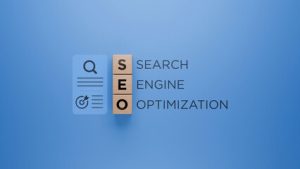Change often starts with clearing away the old. That simple idea defines the world of rubbish removal and demolition, an industry that shapes the physical environment around us more than most people realize. It is not just about hauling away debris or tearing down structures. It is a strategic, planned, and essential process that makes way for renewal, development, and transformation on every level. Behind every modern building, clean neighborhood, or repurposed land, there is a hidden workforce dedicated to the art and science of removal.

At its core, rubbish removal might appear straightforward, but it has evolved into a complex service that addresses diverse challenges. It is not limited to disposing of household waste or clearing construction leftovers. It involves managing materials with environmental considerations, regulatory compliance, and efficiency in mind. The journey of waste today is carefully planned, often separated, treated, or recycled before it ever reaches its final destination. This shift reflects a broader societal change toward sustainability and responsibility, where even the disposal process is expected to contribute to ecological balance.
Demolition, on the other hand, is often perceived as destruction, but its real purpose is renewal. It involves careful planning, precise execution, and adherence to safety and environmental standards. Modern demolition techniques no longer rely solely on brute force. They employ controlled methods, specialized machinery, and innovative technologies to ensure that the dismantling process is as safe, efficient, and eco-conscious as possible. This evolution demonstrates that even in the act of tearing down, there is a thoughtful strategy at work.
One of the most overlooked aspects of rubbish removal and demolition is their role in urban regeneration. Old factories, abandoned structures, and obsolete facilities often stand as barriers to progress. Removing them clears space for parks, housing developments, commercial hubs, or community spaces that revitalize entire areas. This process breathes new life into neighborhoods, stimulates local economies, and improves quality of life. Without the silent work of removal teams, many of these transformations would remain impossible.
Another vital component of this industry is its intersection with sustainability. In the past, demolition and rubbish removal were synonymous with wastefulness, as tons of debris ended up in landfills. Today, that mindset is rapidly changing. Companies now prioritize the salvage and reuse of materials, turning what was once considered waste into valuable resources. Metal, wood, concrete, and glass can often be repurposed, reducing the environmental footprint of projects and aligning with global sustainability goals. This circular approach is not just a trend; it is becoming a necessity.
The complexity of modern rubbish removal also extends to hazardous materials. As older structures are dismantled, dangerous substances like asbestos, lead, or chemical residues may be uncovered. Handling these materials requires strict protocols, specialized equipment, and trained professionals. Failure to manage them properly can lead to health risks, legal consequences, and environmental damage. This is why the industry is heavily regulated and continuously innovating to improve safety and efficiency.
In residential settings, rubbish removal plays a quieter but equally crucial role. Homeowners often underestimate the impact of clutter and waste accumulation on their living environment. Efficient removal not only restores space but also improves safety, hygiene, and mental well-being. In larger residential developments, coordinated removal ensures that construction or renovation projects proceed without delays, maintaining timelines and budgets.
The demolition sector also contributes to technological progress. Advances in robotics, remote-controlled machinery, and precision explosives have transformed how demolition projects are executed. These technologies enhance safety by reducing human exposure to hazardous environments while improving accuracy and speed. They also allow for selective demolition, where only specific parts of a structure are removed, preserving valuable components and minimizing waste.
Another often-ignored dimension of this industry is its economic significance. Rubbish removal and demolition support construction, real estate, infrastructure, and urban planning sectors. They create employment, stimulate demand for specialized equipment, and generate opportunities for recycling and materials recovery businesses. This ripple effect makes the industry a key player in local and global economies, even if its contributions often go unnoticed.
As urban areas grow and evolve, the demand for efficient removal and demolition services continues to rise. Population growth, technological innovation, and environmental policies are reshaping how cities are built and rebuilt. This evolution requires removal strategies that are not only effective but also adaptable. Professionals in the field are constantly upgrading their skills, adopting new tools, and embracing innovative practices to meet these changing demands.
Community impact is another significant but less visible result of effective rubbish removal and demolition. Removing derelict buildings can reduce crime, improve property values, and enhance public safety. Clearing vacant lots can pave the way for green spaces or community centers, strengthening social ties and improving mental health. In many ways, this industry is not just about physical change but also about creating conditions for social progress.
The future of rubbish removal and demolition is likely to be defined by integration with smart technologies and data analytics. Sensors, drones, and real-time monitoring systems are already being used to assess structures, plan demolitions, and track waste streams. These tools enable more accurate planning, minimize risks, and increase transparency. They also support sustainability efforts by providing insights into material flows and opportunities for recycling.
Moreover, public awareness and participation are becoming more important in shaping the industry’s direction. Communities are increasingly involved in decisions about demolition projects, land use, and waste management practices. This collaboration fosters trust, reduces conflicts, and ensures that projects align with public interests and values. It also encourages more responsible behavior regarding waste generation and disposal at the individual and organizational levels.
The economic and environmental stakes of this industry will only grow as global development accelerates. Emerging construction trends, such as modular building and adaptive reuse, will influence how demolition and removal services are structured. The emphasis will shift even more toward minimizing waste, recovering materials, and reducing carbon emissions. This will require not only technological innovation but also stronger collaboration between government bodies, private companies, and communities.
In addition, the concept of “deconstruction” is gaining traction as a more sustainable alternative to traditional demolition. Instead of destroying structures outright, deconstruction involves carefully dismantling them to salvage materials for reuse. While this process can be more labor-intensive and time-consuming, it significantly reduces waste and supports a circular economy. It represents a paradigm shift in how society views the end of a building’s life cycle.
The same applies to rubbish removal, where zero-waste strategies are becoming a standard goal. This involves designing waste systems that prioritize reduction, reuse, and recycling over disposal. Achieving this requires changes in production, consumption, and disposal habits, as well as innovation in waste processing technologies. The result is a more sustainable approach to waste management that benefits both the environment and the economy.
For businesses, efficient rubbish removal and demolition services are essential for staying competitive. Delays or inefficiencies can disrupt project timelines, increase costs, and damage reputations. On the other hand, effective services can streamline operations, improve safety, and enhance sustainability credentials. In an increasingly eco-conscious marketplace, these factors can be decisive in winning contracts and attracting clients.
Residential clients, too, are recognizing the value of professional removal services. Whether clearing out a home, renovating a property, or preparing a site for construction, efficient waste handling can save time, reduce stress, and prevent costly mistakes. The growing demand for these services reflects a broader cultural shift toward valuing cleanliness, order, and sustainability in daily life.
In the end, rubbish removal and demolition are far more than background tasks in the development process. They are transformative forces that shape the spaces where we live, work, and connect. They clear the way for innovation, preserve the environment, and create the conditions for new possibilities to emerge. Their impact is felt not only in the physical landscape but also in the economic, social, and ecological systems that sustain our lives.
As the world continues to change, these industries will remain vital to building a sustainable future. They will evolve with new technologies, adapt to shifting societal values, and embrace more responsible practices. Their role will expand beyond mere removal to include stewardship, regeneration, and innovation. And while their work often goes unseen, their influence is everywhere, in every building that rises where another once stood, in every space reclaimed from neglect, and in every clean, functional environment we take for granted.
In this unseen yet indispensable field, rubbish removal and demolition are not about endings. They are about beginnings, about the space they create for progress to unfold. They remind us that creation often starts with clearing the way and that even in the act of tearing down, there is a vision for what comes next. And in that vision lies the promise of a future built not just on what we construct, but on how wisely we choose to remove and renew.



